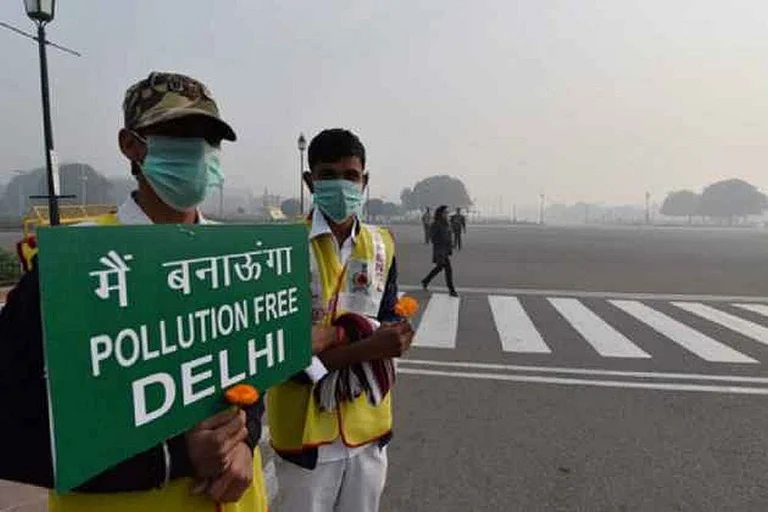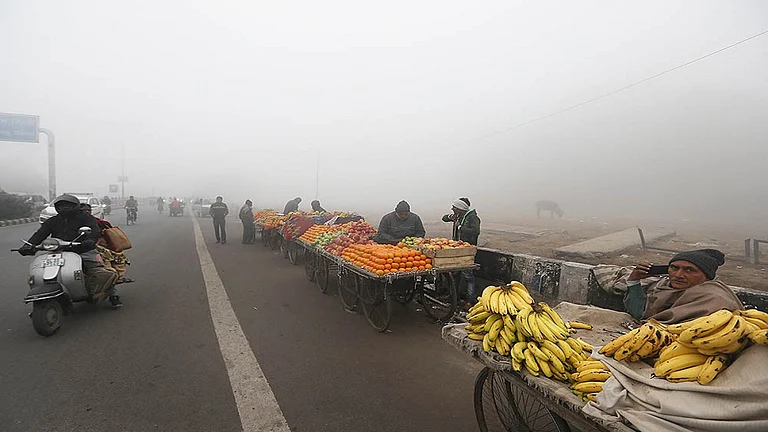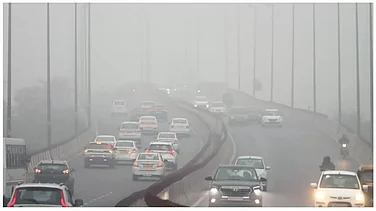
• Delhi NCR AQI remains severe on November 13; average 418 at 4 pm; Bawana 460, Chandani Chowk 455, Wazirpur 452, Rohini 447 (PM2.5 398 µg/m³)
• Noida AQI 306 (hazardous), Gurugram AQI 589 (PM2.5 370 µg/m³); worst air quality in 11 months, second consecutive severe day
• Temperature in Delhi NCR: 26°C max, 11°C min (below normal); shallow fog suppresses atmospheric mixing; cold conditions trap pollutants
• GRAP 3 in effect: Construction bans, BS-3/4 vehicle restrictions, schools up to Class 5 closed, Classes 6-12 hybrid mode
Delhi NCR air pollution crisis continues unabated on Thursday, November 13, with the Air Quality Index remaining in the ‘severe’ category across multiple stations despite GRAP Stage 3 implementation across the region. Delhi NCR AQI showed 409-644 readings at 8 am, with the average AQI at 418 at 4 pm, reflecting persistent hazardous conditions across all major areas. Bawana recorded the highest AQI of 460, followed by Chandani Chowk at 455, Wazirpur at 452, and Rohini at 447, with PM2.5 concentrations measuring 398 µg/m³, equivalent to smoking 13.9 cigarettes daily for continuous 24-hour exposure. The crisis represents the worst air quality in nearly 11 months, marking the second consecutive ‘severe’ day as stagnant atmospheric conditions and stubble burning trap pollutants near ground level.
Delhi NCR Air Pollution: Regional AQI Breakdown
Across the Delhi NCR region, neighboring cities show similarly alarming pollution levels. Noida AQI recorded 306 (hazardous) with PM2.5 at 225 µg/m³, placing residents at serious health risk for respiratory and cardiovascular complications, while Gurugram showed AQI of 589 with PM2.5 at 370 µg/m³ and PM10 at 501 µg/m³, among NCR’s worst pollution levels. The entire Delhi NCR air pollution stems from multiple sources: vehicular and industrial emissions (19.3% of PM2.5), stubble burning from the Punjab and Haryana regions (15.5% external transport contribution), and poor meteorological conditions preventing natural pollutant dispersal.
Temperature in Delhi NCR and Weather Conditions
Temperature in Delhi NCR shows significant cooling, with Delhi recording 26°C maximum and 11°C minimum, well below seasonal norms, creating ideal conditions for pollution accumulation. Shallow fog blanketed the capital during morning hours, reducing visibility and suppressing atmospheric mixing that would normally disperse pollutants. Gurugram temperatures recorded 23°C maximum with 18°C minimum, maintaining the cold trend, intensifying pollution concentration at ground level. IMD weather forecast for Delhi NCR predicts continued dry conditions with marginal winds around 12-14 km/h during the afternoon hours before evening calms.
GRAP 3 Measures and Response Strategy
GRAP Stage 3 remains in full effect across the entire Delhi-NCR with strict construction bans, BS-3 petrol and BS-4 diesel vehicle restrictions, and intensive industrial controls. Schools up to Class 5 remain closed, with Classes 6-12 operating in hybrid mode to minimize student exposure.




























